For additional information relating to this article, please contact:
September 17, 2021CANADIAN HOUSING STATISTICS PROGRAM, 2020 Statistics Canada released new data today from the Canadian Housing Statistics Program (CHSP) for the 2020 reference year. Today's release includes updated information on residential properties and their characteristics, including residency status of the property owner and assessment values. As the data are related to housing stock, results reflect assessment values of Nova Scotia housing as of 2019, prior to the onset of the pandemic.
An individual is considered a resident if their primary dwelling is in the economic territory of Canada, and are considered a non-resident if their primary dwelling is outside the economic territory of Canada. A property is classified as resident owned when the majority of owners are defined as residents. Conversely a property is classified as non-resident owned when the majority of owners are defined as non-residents. When there is an equal number of resident and non-resident owners for the same property, the property is classified as resident owned.
In Nova Scotia in 2020, 3.6% of residential properties were owned by non-residents. This share was down from 4.0% in 2019. The largest share of non-residential ownership was in parts of Richmond county (Subd. B, 14.0%), and Shelburne municipal district (12.8%). The share of non-resident ownership in Halifax was 2.4% in 2020.

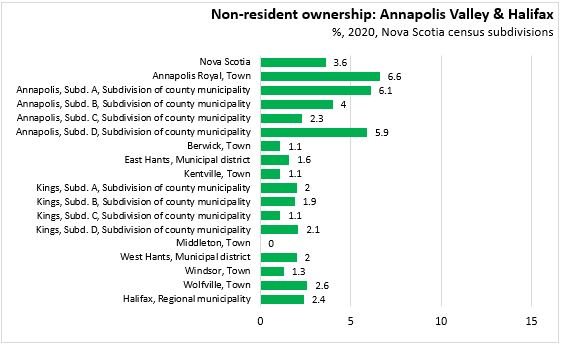


The share of non-resident owned residential properties declined in Nova Scotia and British Columbia while it was unchanged year over year in New Brunswick and Ontario. Of the four provinces with data available, Nova Scotia has the highest share of non-resident ownership. Nova Scotia and New Brunswick have a higher share of non-resident owned vacant land compared to Ontario and British Columbia, where non-resident ownership is more concentrated in single-detached and condominium apartments. In 2020, vacant land accounted for 35.7% of non-resident owned residential properties in Nova Scotia compared to 12.4% and 6.9% of non-resident owned residential properties in Ontario and British Columbia, respectively.
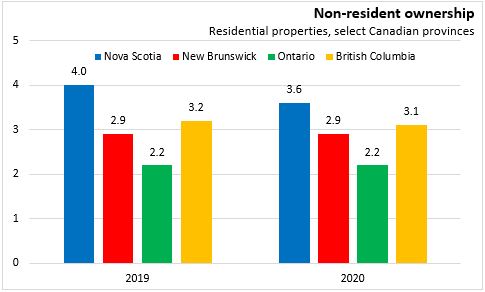
The median assessed value of residential property in Nova Scotia was $131,000 in 2020, up from $129,000 in 2019. Across the province, the highest median assessment values were in Wolfville ($232,000), Halifax ($229,000), Mahone Bay ($213,000) and Lunenburg ($204,000). The lowest median assessments were in St. Mary's ($40,800) and parts of Cumberland county (Subd. A, $41,900). Data are presented below by economic region.
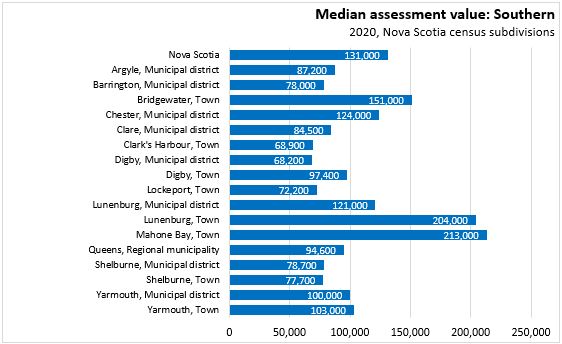
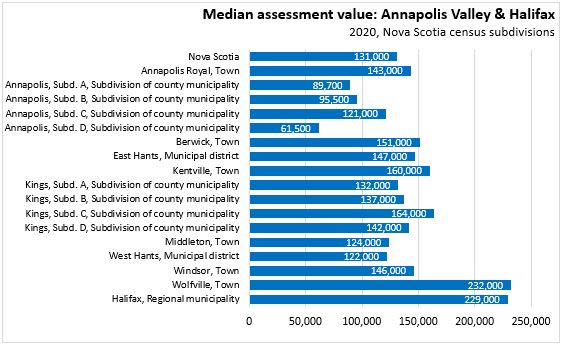
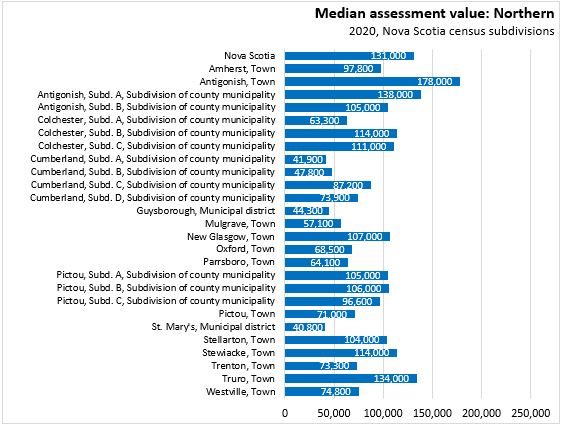
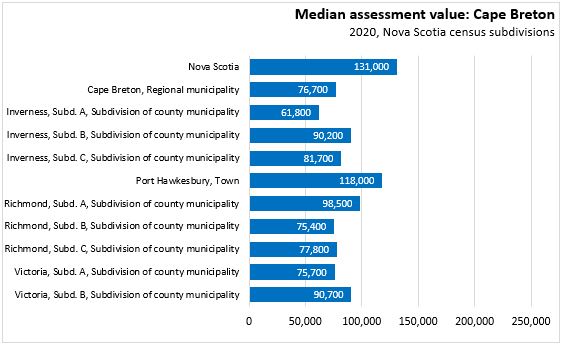
Source: Statistics Canada, Canadian Housing Statistics Program, 2020
Table 46-10-0053-01 Ownership type and property use by residential property type and period of construction ; Table 46-10-0054-01 Residency ownership and property use by residential property type and period of construction